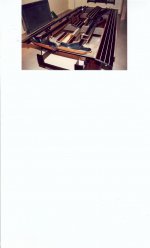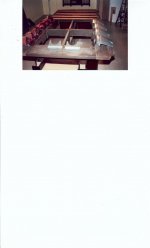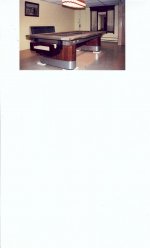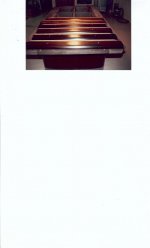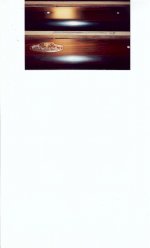How do you know that it's Brunstone? Because someone here said it?
After the research that I performed this morning, I would venture a guess that I have never actually seen Brunstone. In fact, I might also venture a guess that what we've all previously thought of as Brunstone is actually slate.
I found an article in the Brunswick Library (dated 1945), documenting the movement of slate forming operations from Pennsylvania to Virginia. While this does not suggest that the slate was actually being mined in Pennsylvania, I would guess that it was harvested somewhat locally. There is written documentation to suggest that Brunswick used Vermont slate from the 1800's to the mid-1900's. There is also written documentation that suggests that Brunswick began using Italian slate in the mid-1900's.
The following website discusses some of the different types of slate, including variation by region. Most interesting, are the comments about Brazilian slate:
Another interesting read
In particular, the following statements about Brazilian slate seems very much in line with what we (seemingly mistakenly) refer to as Brunstone:
Slate, and slate-like stone, is produced in other parts of the world as well. There is a tremendous volume of black slate quarried in Spain. China has been exporting slate for a number of years. More recently we have seen Brazilian slate enter the US market, and even some material from India. To date we have chosen not to import or promote roofing slate from these regions for a variety of quality related reasons, including:
Prevalence of oxidizable iron pyrite inclusions that can rust and discolor a roof or create holes in a slate
High carbonate content which can cause the slates to turn white
Exceptionally brittle or glassy stone that is difficult to cut
High amounts of broken slates
Inconsistent product
High water absorption leading to delamination
Debate about whether some material being marketed as slate is slate. The Galacian & Spanish Slate Association has published a very interesting report on some of the slate being produced in Brazil and how it differs from other sources.
http://www.spanishslateuk.com/slate_from_brazil.asp
Based on this information, I think we may be able to assume that Brunswick may have sourced slate from some different areas, which could be what we have all come to (mistakenly) accept as Brunstone, since it varies so greatly from what we know to be good quality slate.
In looking through all of the available Brunswick catalogs, in the Brunswick History Library, there was never any mention of Brunstone until 1981. In fact, all Gold Crown tables, from 1961-Present, tout the use of 1" slate. Tables that were offered with Brunstone, were clearly labeled as such.
